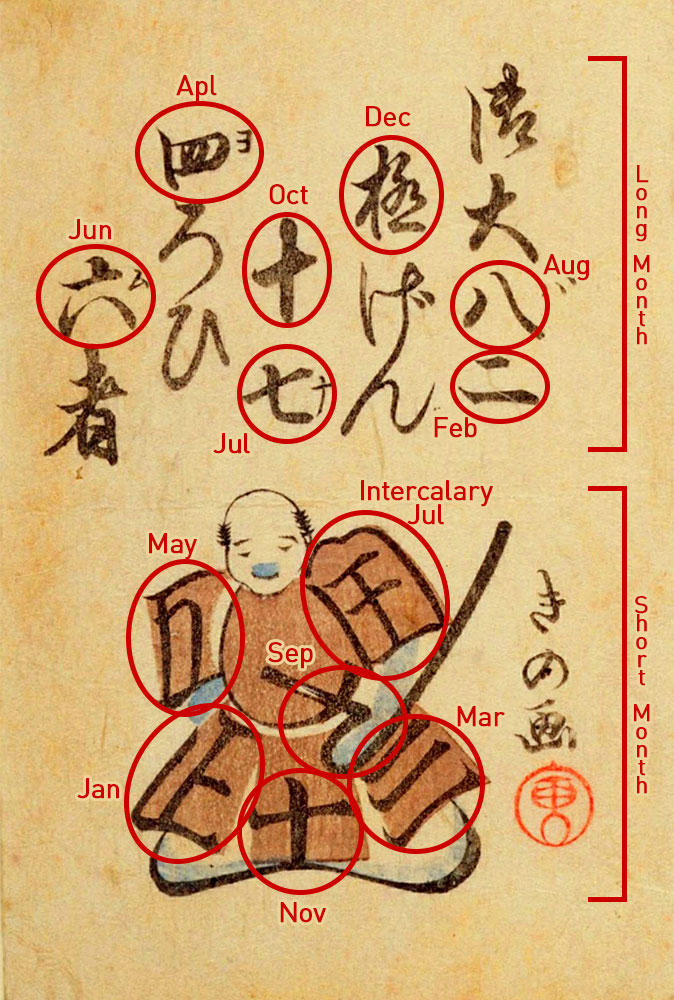- Top
- > Unriddling the Daisho-reki Calendar
- > List of the Daisho-reki Calendars
- > [Samurai in armor]
A.47th year of Kaei(1854) Daisho-reki [Samurai in armor]
Seven characters indicating the months are inserted in the sentences. The character Dai and the numerals eight and two are in the first line and the character on the uppermost part of the second line is the Chinese for the month of December.
The characters for ten and seven in the third line, four in the fourth line, and six in the last line are shown. These are the long months. In the armor of the samurai shown below are the characters for numbers one, three, five, nine and eleven, and that for the intercarlary month. These are the short months.
This calendar was made in 1854, the year after Commodore Matthew C. Perry and his "Black Ships" crashed the door to Japan, which had remained closed for over two centuries. Appalled that Perry had done it in spite of Japan's defenses, the Edo shogunate government hurriedly built a fortress on the shore of Tokyo Bay (today the trendy Odaiba waterfront district). These sentences mention the construction of the fortress and samurai wearing armor to ward off a possible foreign attack, and a samurai is depicted. For more than 200 years prior to Perry's intrusion, Japan had seen no large-scale warfare and its samurai had had no need for armor. Evidently the calendar was a satire of samurai brimming with zeal wearing the obsolete armor handed down from their distant ancestors. These calendars often reflected the social conditions of their time.
- Long months :
- February, April, June, July, August, October, December
- Short months :
- January March, May, Intercalary July, September, November
The answer is displayed on the image in red. Click the image to toggle the displayed answer on or off.




